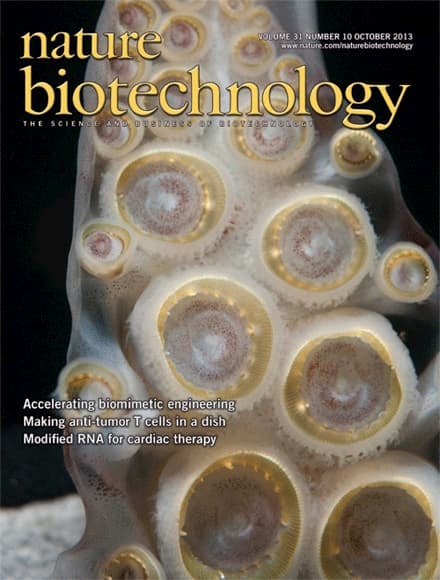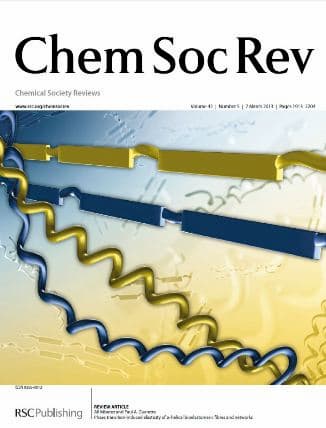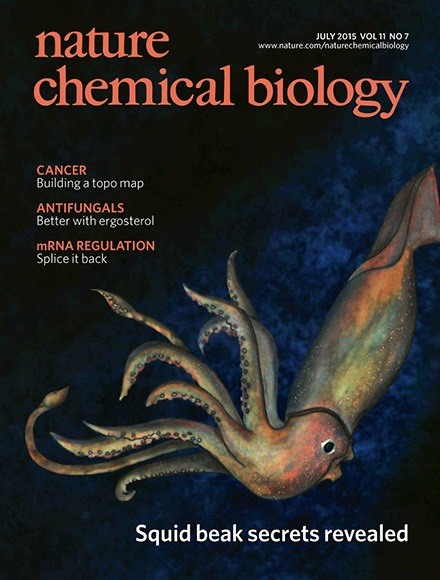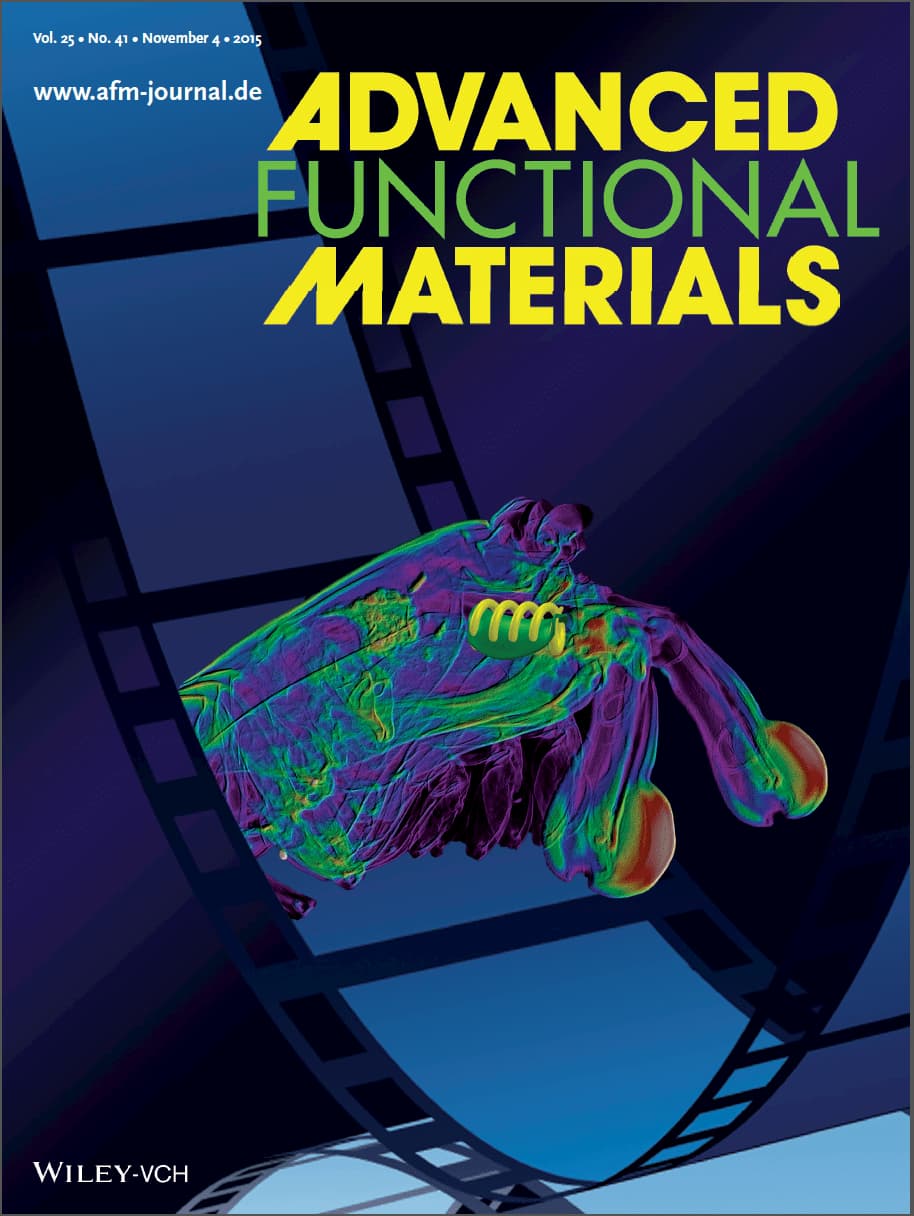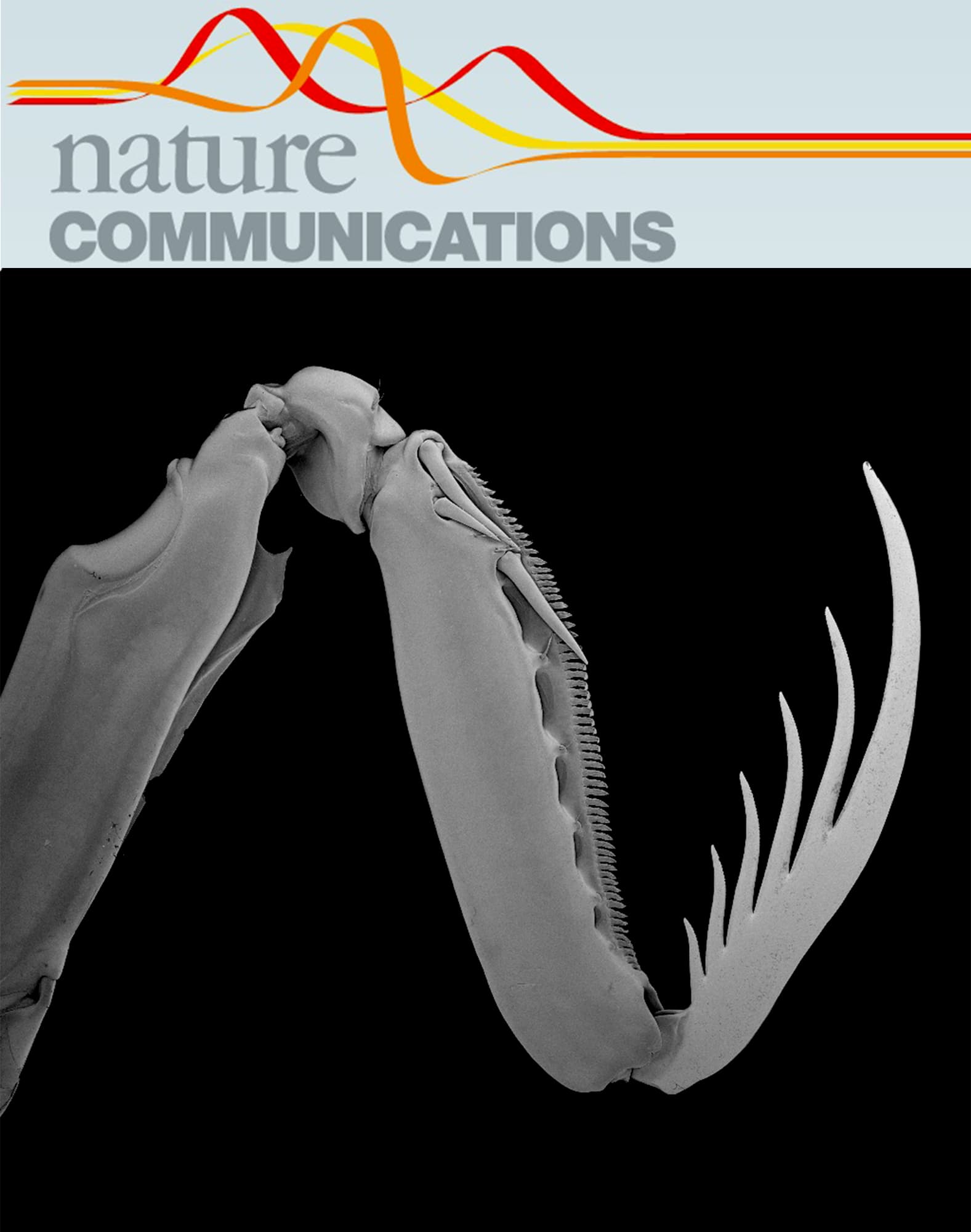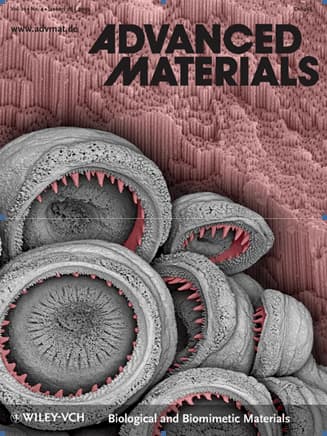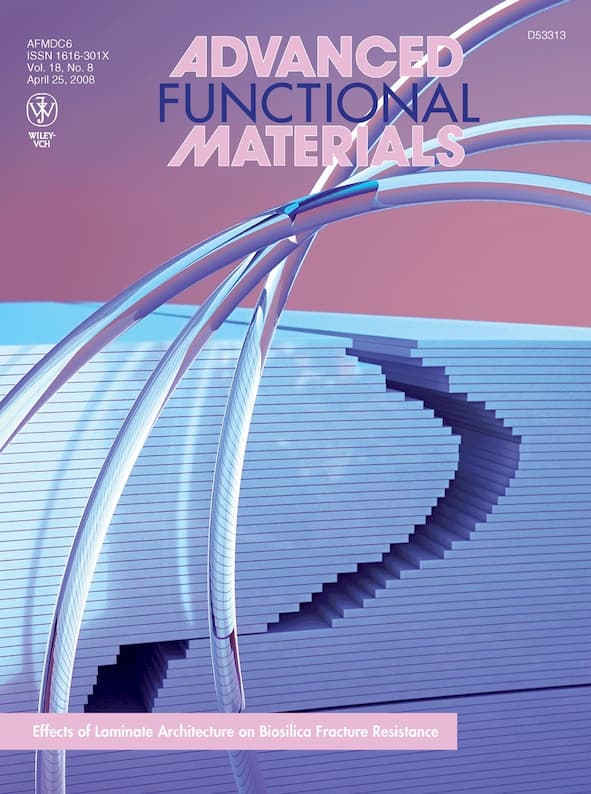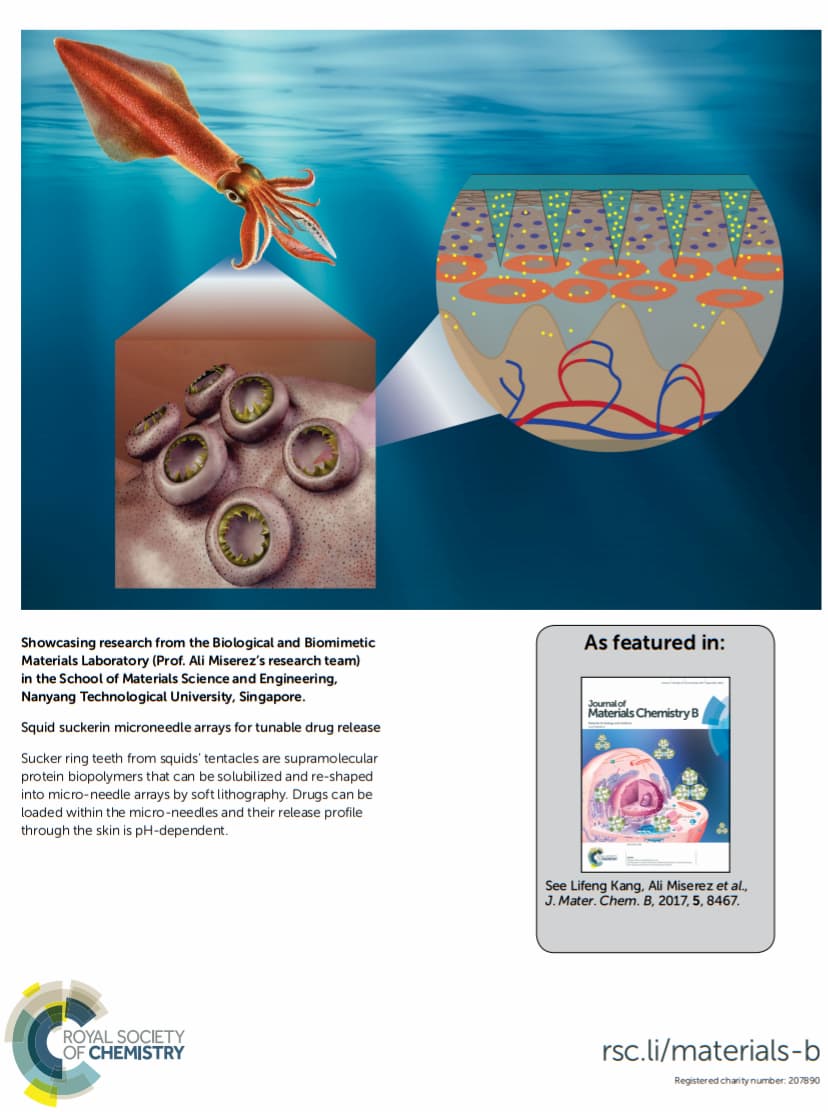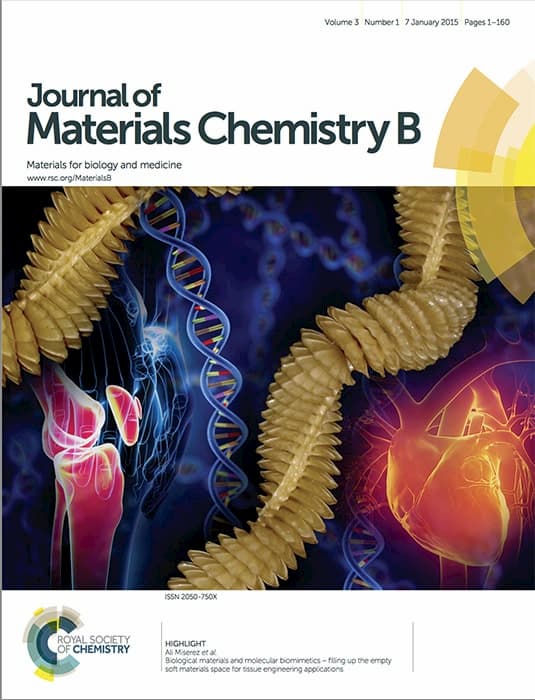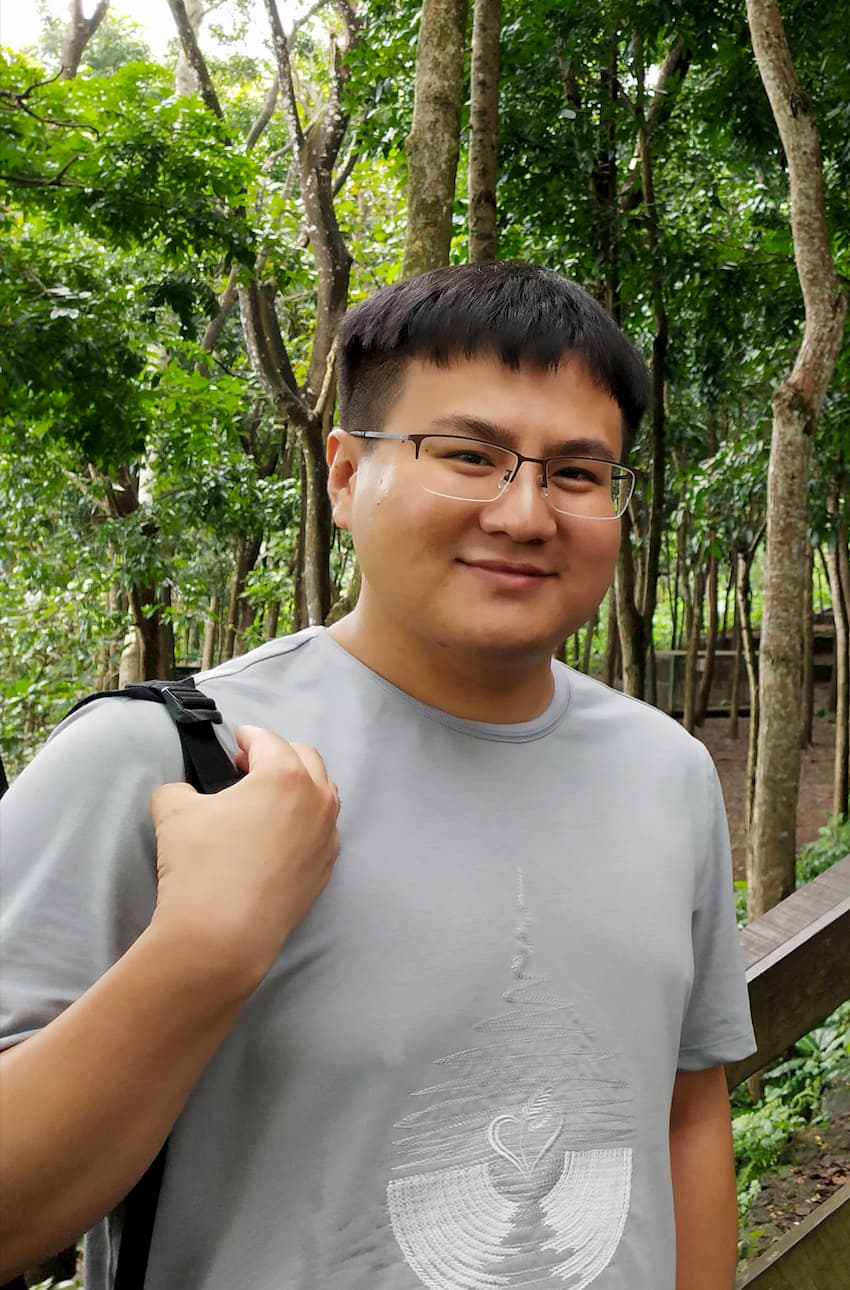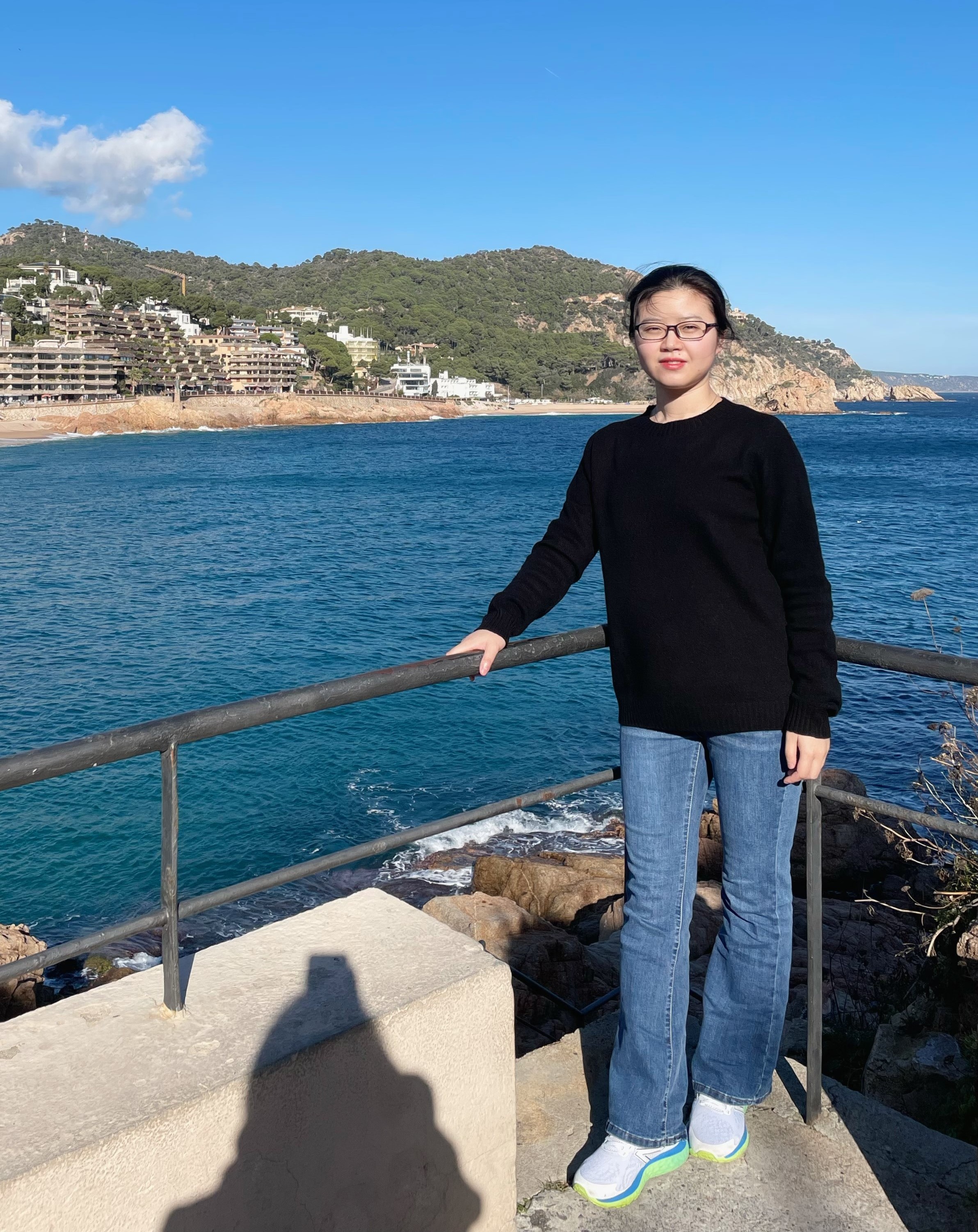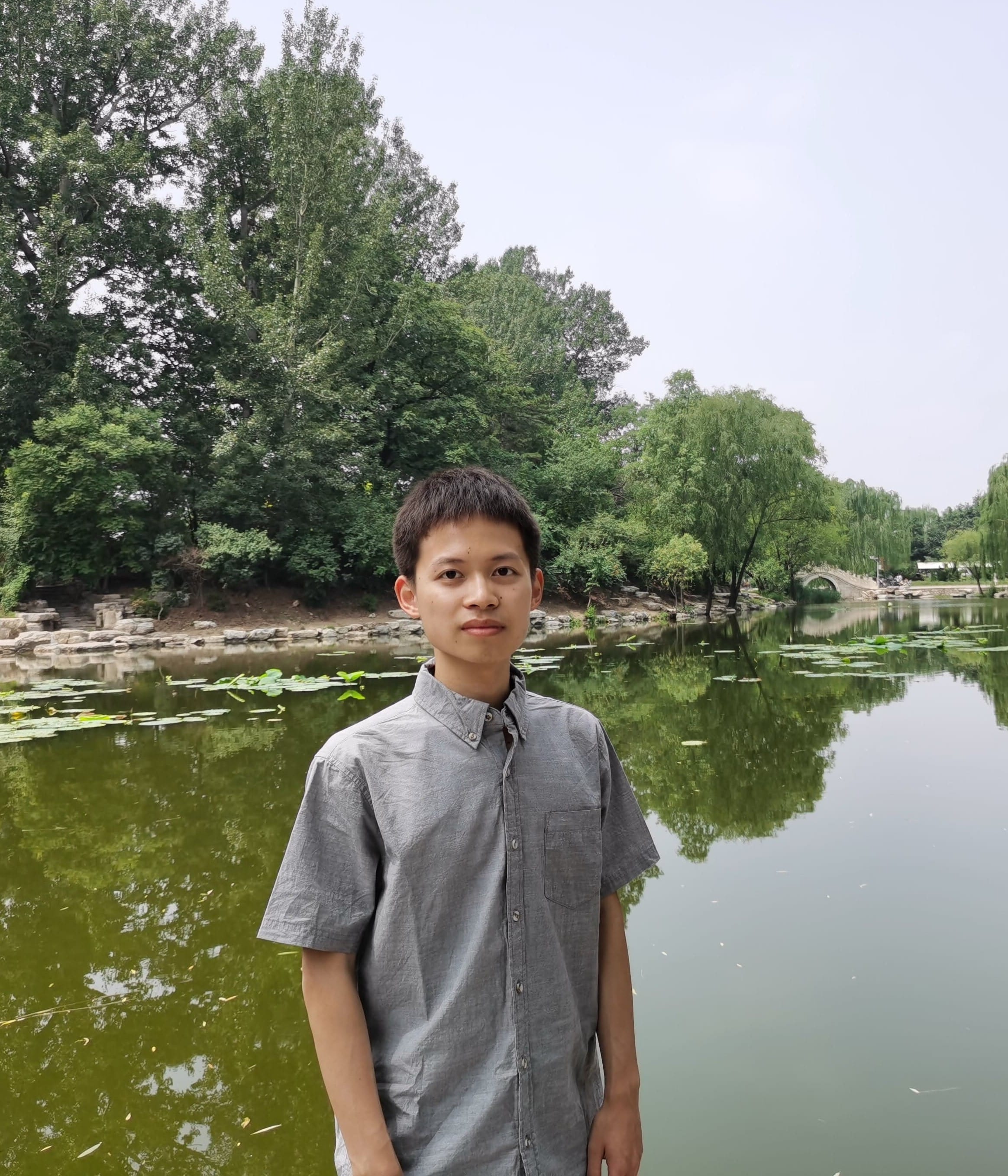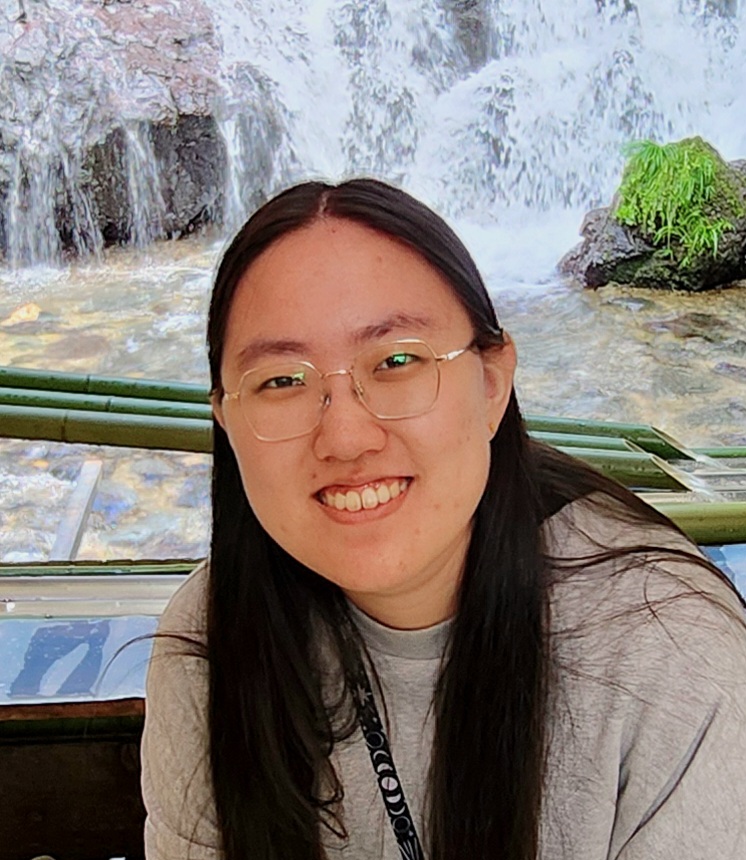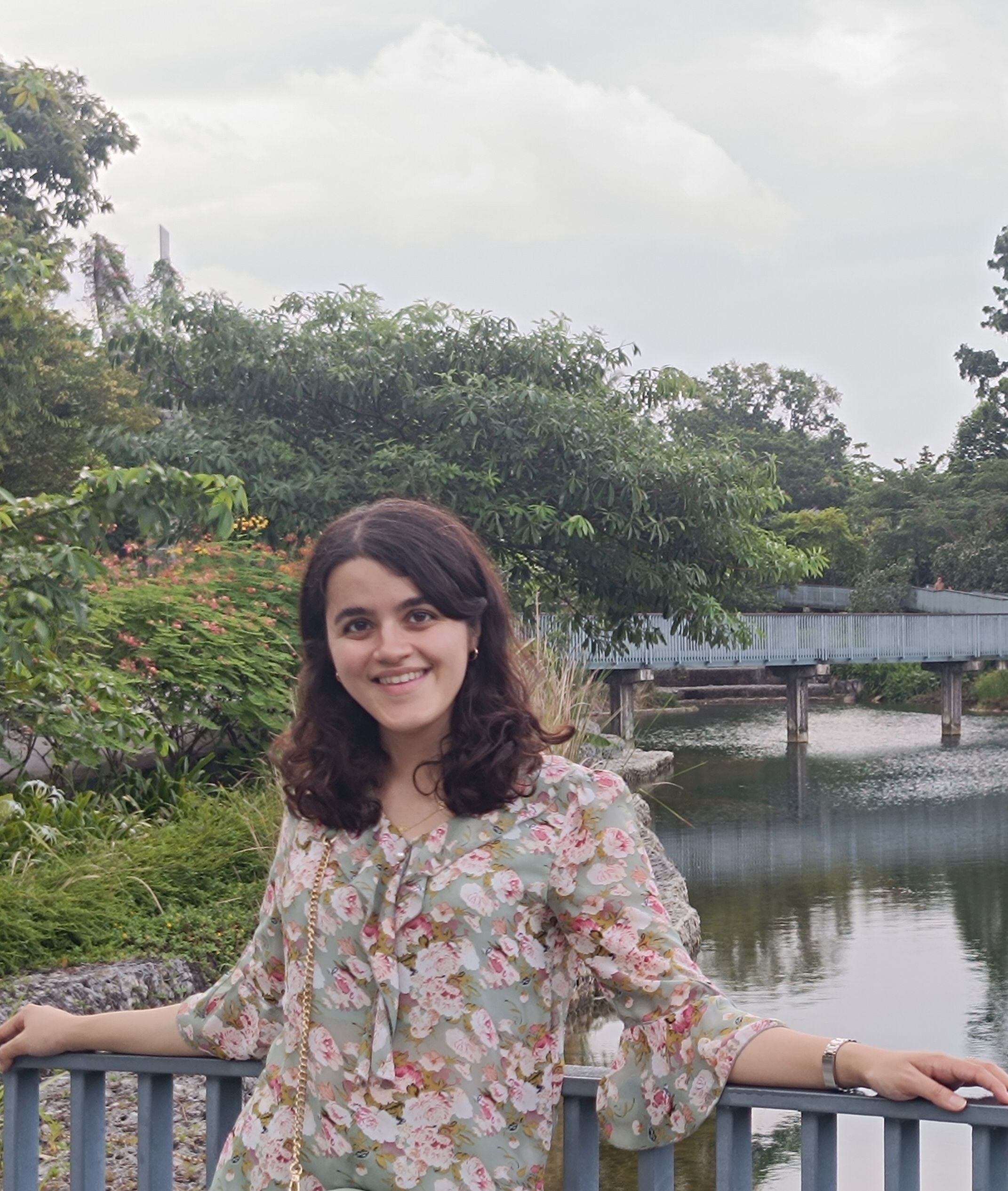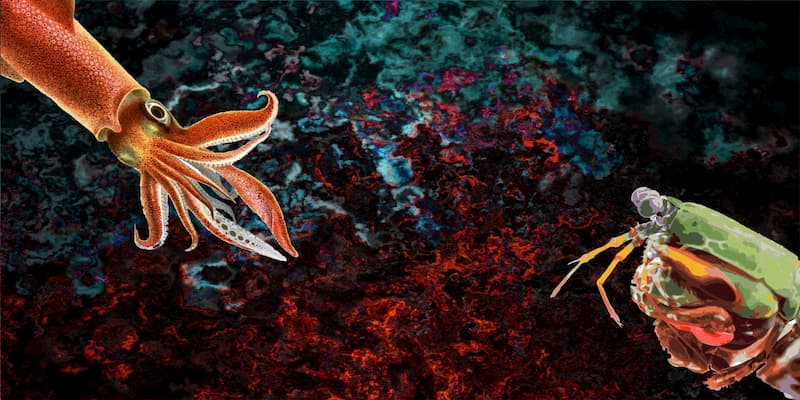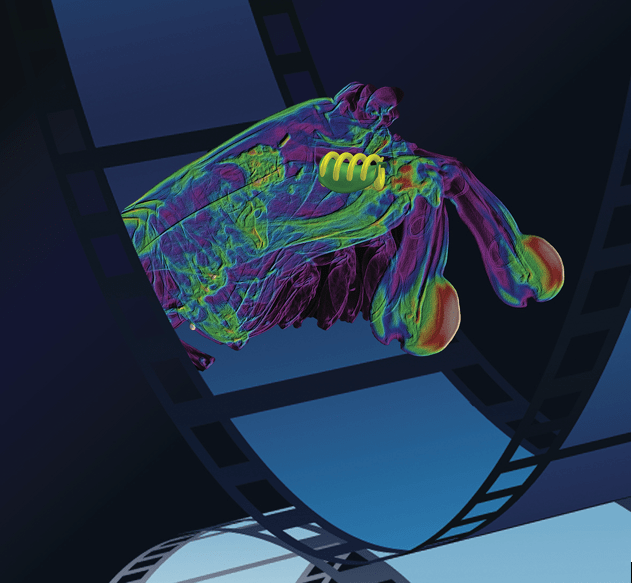Our Research
The Biological and Biomimetic Materials Laboratory (BBML) is guided by Prof. Ali Miserez. We study natural multifunctional materials that feature unique (or combination of) properties not achieved in man-made materials. Nature processes complex, tailored, structural materials, in an aqueous environment under ambient temperature and pressure (or less) using natural compounds. These naturally selected, time-tested biomaterials are recognized as powerful model systems, and their energy-efficient synthesis confers the motivation for our research. Understanding the underlying “green chemistry” can potentially offer sustainable alternatives to engineer existing as well as new materials. We endeavor to mimic these key structural, biochemical, and physicochemical principles that are discovered in the model systems and envision to overcome scientific challenges in diverse fields.
Research Approach
We discover and explore employing biomimetic-thinking methodologically using a multidisciplinary approach. Critical technological and scientific breakthroughs in the past allow us to brainstorm and study biological structures in a refined way. We identify and characterize proteins in the natural materials; recreate their synthetic analogs applying design strategies to emulate functional mimicries. For this, we accumulate creative ideas and techniques, adopted from:
Biochemistry: Protein identification, isolation, sequencing, recombinant protein expression.
Biophysics: Spectroscopy, X-ray diffraction, single-molecule force spectroscopy.
Material's characterization: Micro-nano structure, mechanical properties at various length scales, structure-process-property relationships.
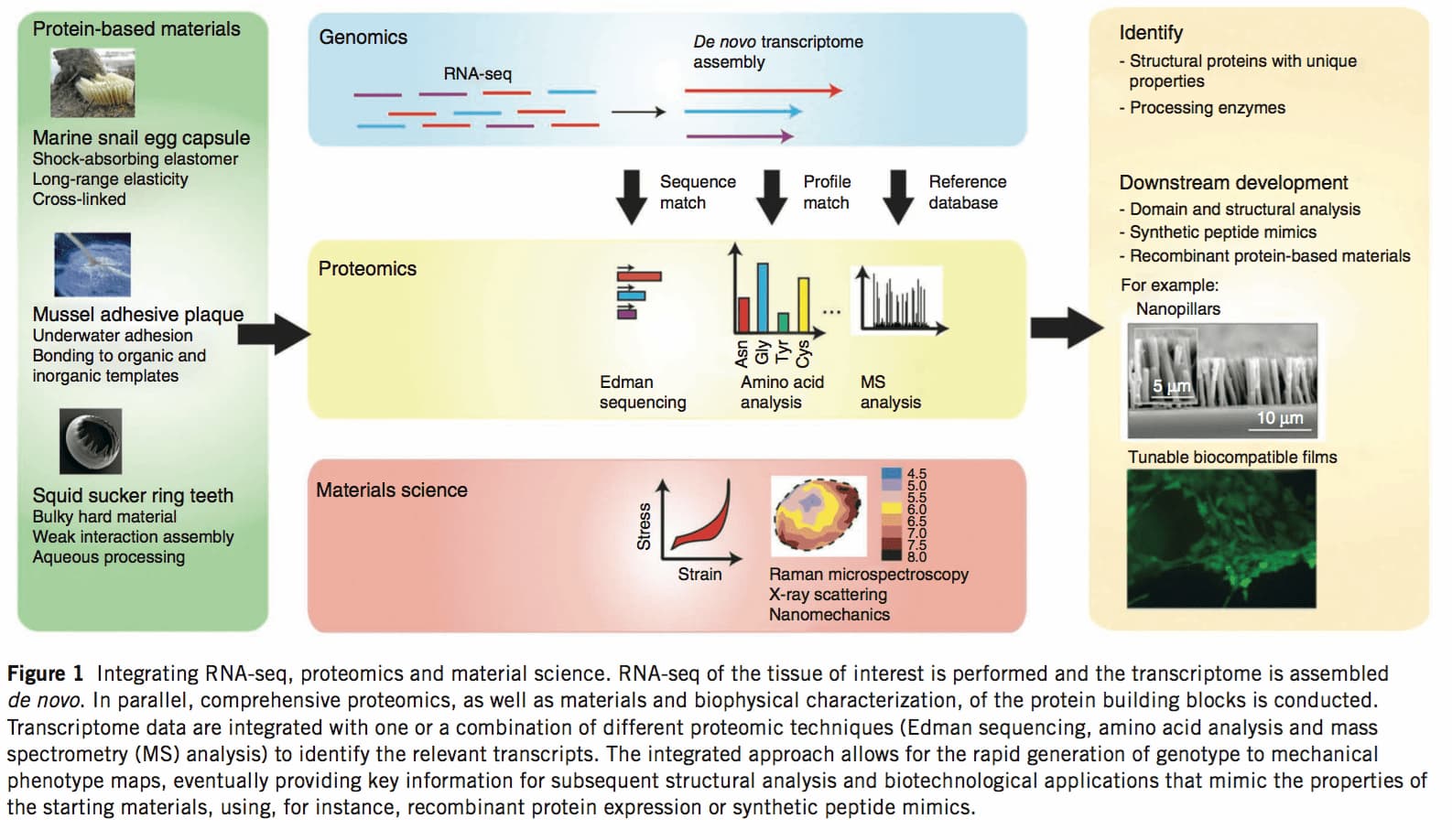
Accelerating the design of biomimetic materials by integrating RNA-seq with proteomics and materials science, Nature Biotechnology, 2013.
Focus Areas
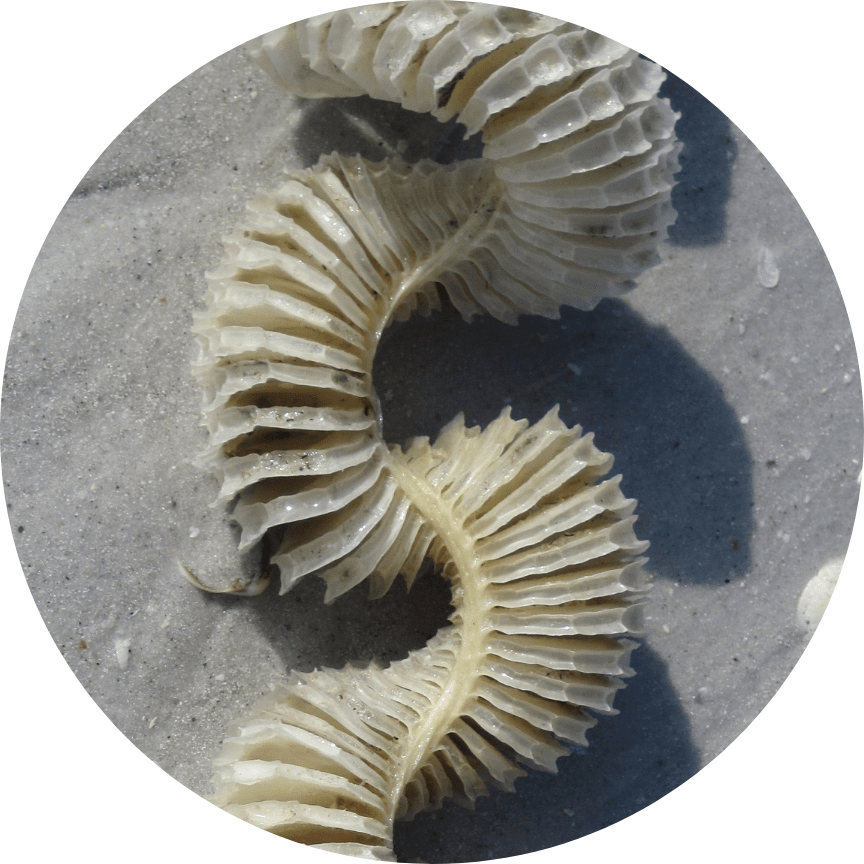
Bioelastomeric Membranes & Coiled-Coil Engineering
Bioelastomers in nature are fascinating materials because some of them own unique combinations of structural and physicochemical properties. In our lab, we explore the bioelastomers that derive their properties from coiled-coil proteins, such as the marine snail's egg capsules capable of effective dissipation of tidal energy.
Learn more.
Mechanisms of Biofouling Adhesion & Anti-Adhesive Coating
The projects focus to counter marine biofouling problems, which causes a significant economic and environmental impact. We understudy the adhesive proteins of marine foulers that drive the robust underwater adhesion. Efforts are also directed towards the development of methods to assess fouling and anti-adhesive coatings.
Learn more.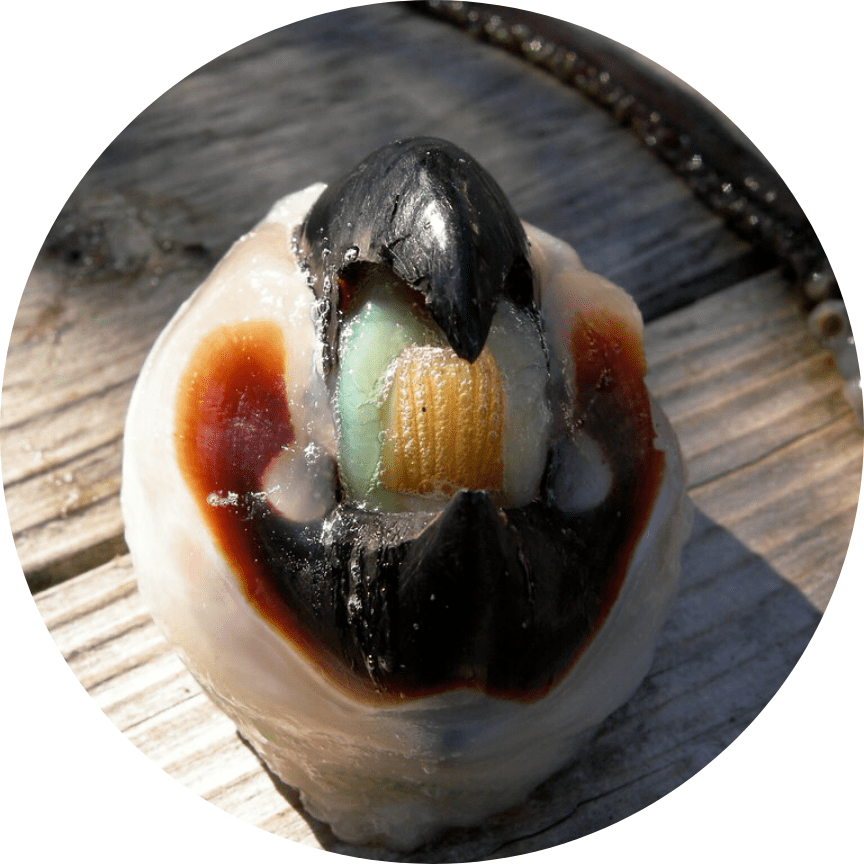
Molecular Biomimetics of Non-Mineralized Hard Tissues
Unlike hard tissues, nature also employs dense protein cross-linking, and/or formation of polysaccharide/protein complexes to impart strength and wear-resistance functionalities. Recognition of this novel paradigm offers for characterization, biomimetic synthesis of robust and biocompatible structural polymers with little or no mineral content.
Learn more.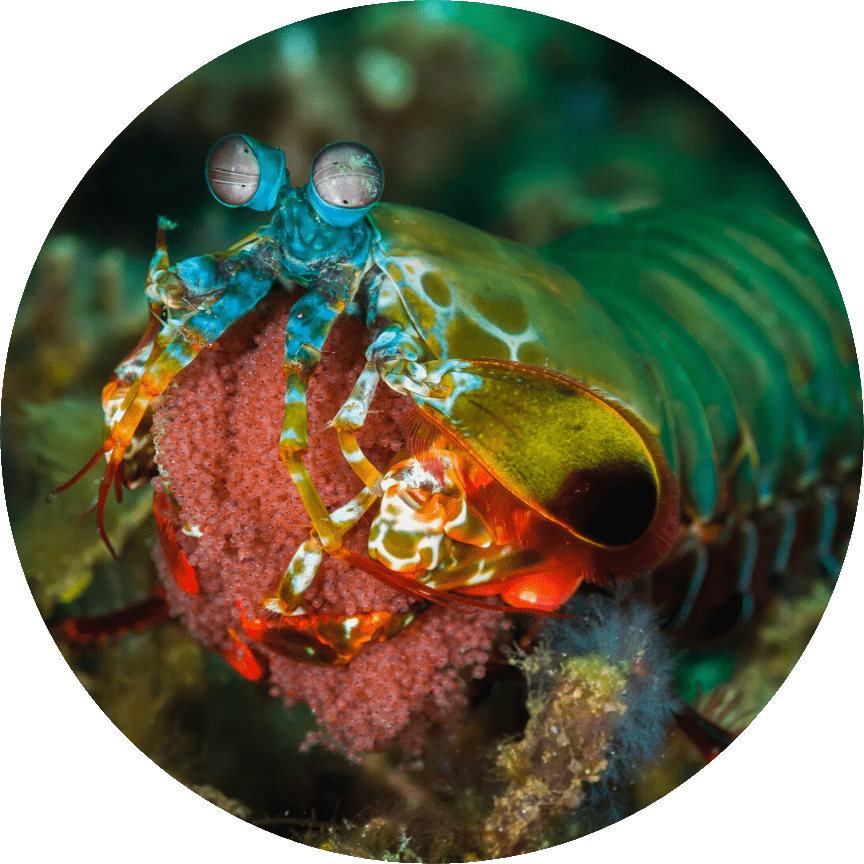
Biomineralized Structures with Graded/Modulated Properties
Projects explore biomineralized composites with unexpected inorganic materials that are assembled in a highly controlled manner exhibiting tailored functionalities. We also engage in developing in situ mechanical testing methods to reveal structure-properties relationships across multiple length scales.
Learn more.
Liquid-Liquid Phase Separation
Liquid-liquid phase separation gives rise to fluidic droplets, which are found across multiple length scales of the biological media. By performing highly differentiated functions, these droplets act as dynamic “membraneless organelles” that allow the living system to rapidly assemble (and disassemble) molecular collectives and switch on –or turn off– new functionalities.
Learn more.Hierarchical Structural Organization in Bioinspired Peptide Coacervate Microdroplets,ACS Nano, 2025.
Peptide coacervates as intracellular delivery vehicles for synergistic cancer photothermal-and chemo-therapies,APL bioengineering, 2025.
Polyethylene-Glycol-Conjugated Peptide Coacervates with Tunable Size for Intracellular mRNA Delivery,ACS nano, 2025.
Next-generation materials for nucleic acid delivery,Nature Reviews Materials, 2025.
Engineered Peptide Coacervates Enable Efficient Intracellular Delivery of the MYC Inhibitor omoMYC,Molecular Pharmaceutics, 2025.
Bacterial XopR subverts RIN4 complex-mediated plant immunity via plasma membrane-associated percolation,Developmental Cell, 2025.
Conserved leucine-rich repeat proteins in the adhesive projectile slime of velvet worms,Proceedings of the National Academy of Sciences, 2025.
Organoids Producing Materials,ChemRxiv, 2025.
Coacervating proteins stick like a tick,Nature Chemistry, 2025.
Peptide-based complex coacervates stabilized by Cation− π interactions for cell engineering,Journal of the American Chemical Society, 2025.
Trifluoroacetic Acid as a Molecular Probe for the Dense Phase in Liquid–Liquid Phase-Separating Peptide Systems,Analytical Chemistry, 2024.
Phase-separating peptide coacervates with programmable material properties for universal intracellular delivery of macromolecules,Nature Communications, 2024.
Cellular uptake of phase-separating peptide coacervates,Advanced Science, 2024.
Self-assembly of peptide nanocapsules by a solvent concentration gradient,Nature Nanotechnology, 2024.
Proton conductivity of the protein-based velvet worm slime,Iscience, 2024.
Accelerated engineering of ELP-based materials through hybrid biomimetic-de novo predictive molecular design,Advanced Materials, 2024.
Fluid protein condensates for bio-inspired applications,Nature Reviews Bioengineering, 2024.
Barnacle cement protein as an efficient bioinspired corrosion inhibitor,Communications Materials, 2024.
pH-dependent interactions of coacervate-forming histidine-rich peptide with model lipid membranes,Frontiers in Soft Matter, 2024.
Tuning the viscoelastic properties of peptide coacervates by single amino acid mutations and salt kosmotropicity,Communications Chemistry, 2024.
Copper decontamination using feather keratin amyloid-carbon hybrid membranes,American Chemical Society, 2024.
Bioinspired Squid Peptides─ A Tale of Curiosity-Driven Research Leading to Unforeseen Biomedical Applications,American Chemical Society, 2023
Fluid protein condensates for bio-inspired applications,Nature Reviews Bioengineering, 2023.
Biomineralization of mantis shrimp dactyl club following molting: Apatite formation and brominated organic components,Acta biomaterialia, 2023.
Renewable Energy from Livestock Waste Valorization: Amyloid-Based Feather Keratin Fuel Cells,ACS Applied Materials & Interfaces, 2023.
Redox-Responsive Phase-Separating Peptide as a Universal Delivery Vehicle for CRISPR/Cas9 Genome Editing Machinery,ACS nano, 2023.
Monitoring Disassembly and Cargo Release of Phase-Separated Peptide Coacervates with Native Mass Spectrometry,Analytical Chemistry, 2023.
Phase-Separating Peptides Recruiting Aggregation-Induced Emission Fluorogen for Rapid E. coli Detection,Analytical Chemistry, 2023.
Flexible design in the stomatopod dactyl club,IUCrJ, 2023.
Biomineralization in Barnacle Base Plate in Association with Adhesive Cement Protein,ACS Applied Bio Materials, 2023.
Peptide-based liquid droplets as emerging delivery vehicles,Nature Reviews Materials, 2023.
Modulation of Mechanical Properties of Short Bioinspired Peptide Materials by Single Amino-Acid Mutations, Journal of the American Chemical Society, 2023.
Biomineralization in Barnacle Base Plate in Association with Adhesive Cement Protein,ACS Applied Bio Materials, 2023.
Peptide-based liquid droplets as emerging delivery vehicles,Nature Reviews Materials, 2023.
Modulation of Mechanical Properties of Short Bioinspired Peptide Materials by Single Amino-Acid Mutations, Journal of the American Chemical Society, 2023.
Rapeseed Cake Valorization into Bioplastics Based on Protein Amyloid Fibrils, Advanced Materials Technologies, 2023.
Protein-Based Biological Materials: Molecular Design and Artificial Production, Chemical Reviews, 2023.
Harnessing Gradients for Self-Assembly of Peptide-Based Nanocapsules: A Pathway to Advanced Drug Delivery Systems, bioRxiv, 2023.
Squid Suckerin-Spider Silk Fusion Protein Hydrogel for Delivery of Mesenchymal Stem Cell Secretome to Chronic Wounds, Advanced Healthcare Materials, 2023.
Interplay Between Interfacial Energy, Contact Mechanics, and Capillary Forces in EGaIn Droplets, ACS Applied Materials & Interfaces, 2022.
Phase-Separating Peptides for Direct Cytosolic Delivery and Redox-Activated Release of Macromolecular Therapeutics, Nature Chemistry, 2022.
Disorder–Order Interplay of a Barnacle Cement Protein Triggered by Interactions with Calcium and Carbonate Ions: A Molecular Dynamics Study, Chemistry of Materials, 2020.
Magnetically responsive peptide coacervates for dual hyperthermia and chemotherapy treatments of liver cancer, Acta Biomaterialia, 2020.
Hydrogen bond guidance and aromatic stacking drive liquid-liquid phase separation of intrinsically disordered histidine-rich peptides, Nature Communications, 2019.
Glucose-Responsive Peptide Coacervates with High Encapsulation Efficiency for Controlled Release of Insulin, Bioconjugate Chemistry, 2018.
Preventing mussel adhesion using lubricant-infused materials, Science, 2017.
Squid suckerin microneedle arrays for tunable drug release, Journal of Materials Chemistry B, 2017.
Mussel adhesion is dictated by time-regulated secretion and molecular conformation of mussel adhesive proteins, Nature Communications, 2015.
The Mantis Shrimp Saddle: A Biological Spring Combining Stiffness and Flexibility, Advanced Functional Materials, 2015.
Multi-scale thermal stability of a hard thermoplastic protein-based material, Nature Communications, 2015.
The role of quasi-plasticity in the extreme contact damage tolerance of the stomatopod dactyl club, Nature Materials, 2015.
Infiltration of chitin by protein coacervates defines the squid beak mechanical gradient, Nature Chemical Biology, 2015.
From Soft Self-Healing Gels to Stiff Films in Suckerin-Based Materials Through Modulation of Crosslink Density and β-Sheet Content, Advanced Materials, 2015.
Biological materials and molecular biomimetics – filling up the empty soft materials space for tissue engineering applications, Journal of Materials Chemistry B, 2015.
Textured fluorapatite bonded to calcium sulphate strengthen stomatopod raptorial appendages, Nature Communications, 2014.
Accelerating the design of biomimetic materials by integrating RNA-seq with proteomics and materials science, Nature Biotechnology, 2013.
Phase Transition-Induced Elasticity of α-helical Bioelastomeric Fibres and Networks, Chemical Society Reviews, 2013.
Cross-linking Chemistry of Squid Beak, Journal of Biological Chemistry, 2010.
Microstructural and Biochemical Characterization of the Nanoporous Sucker Rings from Dosidicus gigas, Advanced Materials, 2009.
Non-entropic and reversible long-range deformation of an encapsulating bioelastomer, Nature Materials, 2009.
The Transition from Stiff to Compliant Materials in Squid Beaks, Science, 2008.
Effects of Laminate Architecture on Fracture Resistance of Sponge Biosilica: Lessons from Nature, Advanced Functional Materials, 2008




